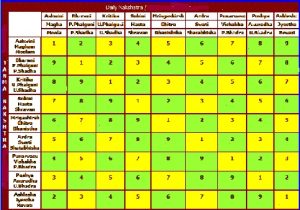Introduction
Vedic Astrology offers a deep understanding of many aspects of life. One particular subfield of this age-old science called muhurta astrology, focuses on determining the best times to start important projects. Muhurta astrology has a long history and was formerly regarded as the mainstay of astrological applications. Famous analyst Institution vedicastro.in emphasises how important it is to determine one’s immediate future in relation to one’s horoscope at birth. Muhurta astrology emphasises coordinating endeavours with beneficent cosmic energy to improve life’s overall results.
A brief analysis of Vedic variables
A number of variables are examined carefully before a Mahurtha is finalised. Examining Panchanga Shuddhi, Tarabala, and Chandrabala are important elements that need to be considered before deciding on any lucky timing. The verse that follows highlights how important it is to strengthen these elements by worshipping Lord Narayana before beginning any new project.
 Learn KP Astrology from the best Mentor. Enhance your Jyotish knowledge and gain confidence in Prediction.
Learn KP Astrology from the best Mentor. Enhance your Jyotish knowledge and gain confidence in Prediction.
Click the link https://vedicastro.in/courses/kp-astrology-course-2024/ref/2/
Tarabala
Tarabala is a symbol for the starry effect on your birth star, or Janma Nakshatra. Establishing an auspicious Mahurtha requires that the Moon be in its daily star, or Nakshatra, in a favourable position. The strength is influenced by the Moon’s daily movement in your Janma Nakshatra, which affects how favourable it is. The 27 Nakshatras are divided into three Paryaya or Navaka groupings, each consisting of nine Nakshatras. Tarabala is calculated by determining how the daily Nakshatra aligns with your Janma Nakshatra, which includes both Nakshatras. After dividing this value by nine, a favourable result is declared if the residual is 2, 4, 6, 8, 9, or 0. If not, an unfavourable result is shown.
Utilisation of Tarabala Table
Determine the Nakshatra in which the Moon is positioned for the day by identifying your Janma Nakshatra, or Birth Star.
Find your Janma Nakshatra in the table’s left-hand column.
From the first row of the table, determine the daily Nakshatra.
Find the block or junction, which will either be yellow or green.
Next, Tarabala is evaluated as follows:
It is seen as unfavourable if the value is 1, 3, 5, or 7 or if the colour is yellow.
It is considered extremely favourable if the value is 2, 4, 6, 8, or 9 or if the colour is green.
Example
In the Tarabala favourable and unfavourable times are determined by the position of Janma Nakshatra and the Transit Nakshatra. Suppose, the janma nakshatra is Bharani and the transit Nakshatra of today is Aswini then tarabala results come 9 which is considered very good. It means today is good for luck and if anyone having Natal Bharani nakshatra jataka will get the auspicious results as his luck will do justice in his favour.
Again if your Natal Nakshatra lord is Aswini and Today’s Transit Nakshatra is Bharani. It means this day also becomes favourable for you as Tarabala scores 2 which is good.
However, if your birth star say Uttarafalguni and today’s transit star is Chitra then the Tarabala score is 3 which is not favourable. So the jataka whose Janma Nakshatra is Uttara falguni should consider this day as a bad day according to the rule of Tarabala and hence he should avoid today to execute any important event.
Important Points
Establishing a Mahurtha chart is crucial, and tarabala is a necessary first step in starting an important event. Mahurtha can be pursued even in the midst of unfavourable Tarabala by putting the following Dosha Pariharas into practice. Nevertheless, the Mahurtha should be thrown away if the Tarabala is unfavourable (1, 3, 5, and 7) and the Tara falls inside the First Paryaya for Janma Tara, Second Paryaya for Vipat Tara, Third Paryaya for Pratyak Tara, or any Paryaya for Naidhana. In these situations, no Parihara will be helpful. Conversely, a strong Mahurtha chart with favourable planet positions can balance out different Doshas.
Pariharas
- When Tarabala is not present for a Mahurtha, one can continue by executing the subsequent Pariharas:
- Janma Tara Dosha: Provide relief by offering green or yellow pumpkin vegetables.
- Reduce the effects of Vipat Tara Dosha by donating jaggery.
- Pratyak Tara Dosha: Apply salt as a remedy.
- Naidhana Tara Dosha: This dosha is best avoided, but if it is unavoidable, think of giving gold and til (sesame seeds).



Good information sir ji
Nice sir ji
Very good information hai ji
Very good for knowledge sir